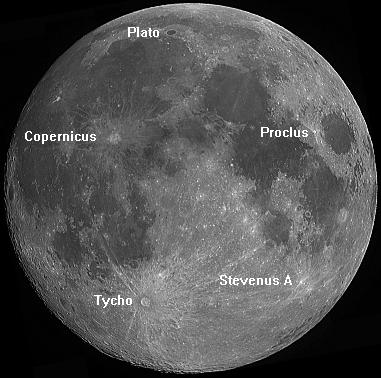Observing the Moon: Crater Hopping
Jack Kramer

To begin with, you should have a fairly detailed lunar atlas. Then with some standout features to use as starting points, you'll be able to feel at home on Earth's nearest neighbor. Beginning toward the north, the crater Plato is an easy target because it's an almost perfect oval with a dark, lava-filled interior. If you've found Plato, then you know you're at the edge of Mare Imbrium. Venturing across this Mare, you'll come to the prominent crater Copernicus with its intricate pattern of ejecta. At about the same latitude, but on the opposite side of the central meridian is the bright crater Proclus, with its short, prominent rays that show up well under most angles of illumination. The most difficult area to navigate is the confusion of craters in the south central highlands. The crater Tycho with its huge rays can be of help here. If you establish where a crater resides with respect to Tycho, it'll be easier to find. But I still have trouble in this area. For one thing, Tycho itself gets lost in the area under a low angle of illumination (a "young" moon), then its rays aren't easily visible. Under these circumstances, I prefer to use the large crater Clavius, just to the south of Tycho. Forming a square pattern with Tycho, Copernicus, and Proclus is the mysterious crater Stevinus A. It's mysterious because it appears to be the source of a large and bright system of ejecta that's out of all proportion to its diameter of only 4 miles. But look for the bright patch and you'll have yourself another guidepost. At least two of these craters should be visible during most phases.
Published in the October 1996 issue of the NightTimes




